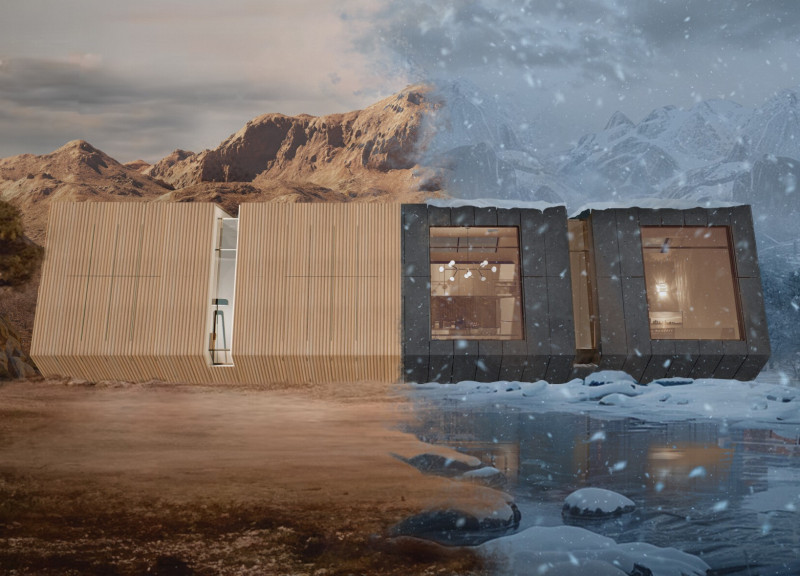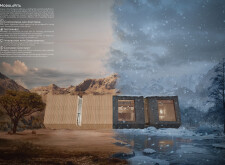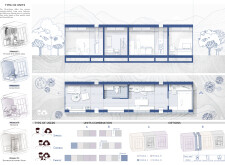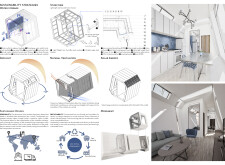5 key facts about this project
## Overview
Located in a context that accommodates a variety of residential environments, the MODULAVITA project redefines traditional housing through a modular design approach. Its intent is to enhance adaptability and functionality, addressing the evolving needs of users in a dynamic living landscape characterized by changes in employment, family size, and lifestyle preferences.
## Spatial Configuration and User Adaptability
The project features a micro-home structure composed of four primary functional modules: kitchen, living room, bedroom, and bathroom. Each module is designed for flexible assembly, allowing users to reconfigure their living spaces according to personal needs and preferences. This modular approach not only facilitates efficient use of space but also supports ease of expansion or modification over time, effectively responding to changing circumstances.
Internal arrangements incorporate strategically placed windows and skylights that optimize natural light, creating bright and inviting living areas. The design encourages communal interaction while providing opportunities for privacy, reflecting modern living dynamics.
## Material Selection and Sustainability
The choice of materials in the MODULAVITA project prioritizes both functionality and environmental considerations. Lightweight stainless steel serves as the structural framework, ensuring durability and minimal maintenance requirements. Oriented strand board (OSB) provides a strong yet eco-friendly option for wall panels, while expanded polystyrene (EPS) contributes to energy efficiency through superior insulation. Cedar wood is employed for cladding, offering aesthetic appeal and enhanced natural insulation properties.
Key sustainability measures include natural ventilation systems that promote efficient airflow and reduce reliance on artificial cooling, as well as integrated water storage solutions for conservation. The inclusion of solar panels further supports renewable energy utilization. Additionally, the project emphasizes local sourcing of materials to minimize transportation impacts and bolster regional economies, adhering to principles of a circular economy through the use of recyclable components.






















































